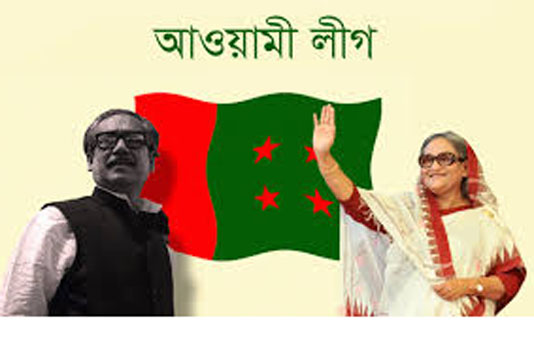DHAKA, Dec 19, 2019 (BSS) – Bangladesh and Awami League (AL) is invariable
and also an inseparable part of Bangalee nation. History of Awami League
means the story of struggle and glory of the Bangalees.
It’s the torchbearer of glorious history and heritage of all democratic
movements of this soil.
The country achieved independence under the leadership of this oldest and
biggest political party.
Awami League is not only the country’s oldest and biggest political party,
rather it is the pioneer of democratic and non-communal spirit of this soil.
From the very beginning, Awami League has been leading the sociopolitical
trend of the country amid different struggles and movements in the seven
decades.
After the Liberation War, the party’s leader Bangabandhu Sheikh Mujibur
Rahman, Father of the Nation, began to build Bangladesh as a non-communal
country.
In line with her father’s ideology, Prime Minister Sheikh Hasina is heading
the country towards massive development.
On June 23, 1949, from a meeting of the supporters of Hussein Shaheed
Suhrawardy at the Rose Garden of KM Das Lane, Old Dhaka, a new political
party named Awami Muslim League was formed.
Coming out from Muslim League, progressive leaders and workers formed Awami
Muslim League. It was the first opposition party in the then East Bengal
(later renamed East Pakistan).
Maulana Abdul Hamid Khan Bhashani became the President, Shamsul Haq of
Tangail as General Secretary while Sheikh Mujibur Rahman was made as Joint
Secretary. In a process of secularization, the word “Muslim” was later
dropped from the name of the party.
Bangabandhu Sheikh Mujibur Rahman came to the leadership of Awami League
amid 1966 Council. Later, he became the unparallel leader of Bangalee nation
and architect of Independent Bangladesh and Father of the Nation.
Awami League led the Mass Upsurge against the Pakistani occupied force in
1969, prompting to join the Liberation War in 1971 to free the people from
the centuries-old subordination.
After the assassination of Bangabandhu and most of his family members on
August 15, 1975 and killing of four national leaders inside the Dhaka Central
Jail on November 3 same year, Awami League became leaderless.
Bangabandhu’s daughter Sheikh Hasina took the helm of Awami League after
returning to the country in 1981. She again united the party. She has been
leading the party for three decades and formed the government in three times
side by side with waging different democratic movements.
After the independence, Awami League was in power around three and a half
years before the assassination of Bangabandhu and five years from 1996 to
2001 under the leadership of Sheikh Hasina and since 2009 general elections
to present.
After the defeat in 2001 general election, Awami League waged successful
movement against the then BNP-Jamaat led alliance government.
In 2007, military-backed caretaker government declared a state of
emergency. Awami League President Sheikh Hasina and top leaders of the party
were arrested. As a result, the party was in crisis in this period.
But, overcoming all hurdles and hostilities, Awami League and grand
alliance under the leadership of Sheikh Hasina achieved a landslide victory
on December 29, 2008 national election.
On January 6, 2009, grand alliance led by Awami League formed government.
Sheikh Hasina became prime minister for third times when Awami League formed
government after winning the January 5, 2014 general elections.
In the general election on December 30 in 2018, the people of Bangladesh
again gave their mandate to the Awami League to form government for a record
third straight term. Awami League President Sheikh Hasina became the prime
minister for the fourth time and third in a row.
As per the electoral pledges, Awami League government has been working
relentlessly to build a poverty and hunger free, advanced and ICT based,
prosperous Bangladesh and thus turn the country into a middle income one by
2021 and developed one by 2041.



